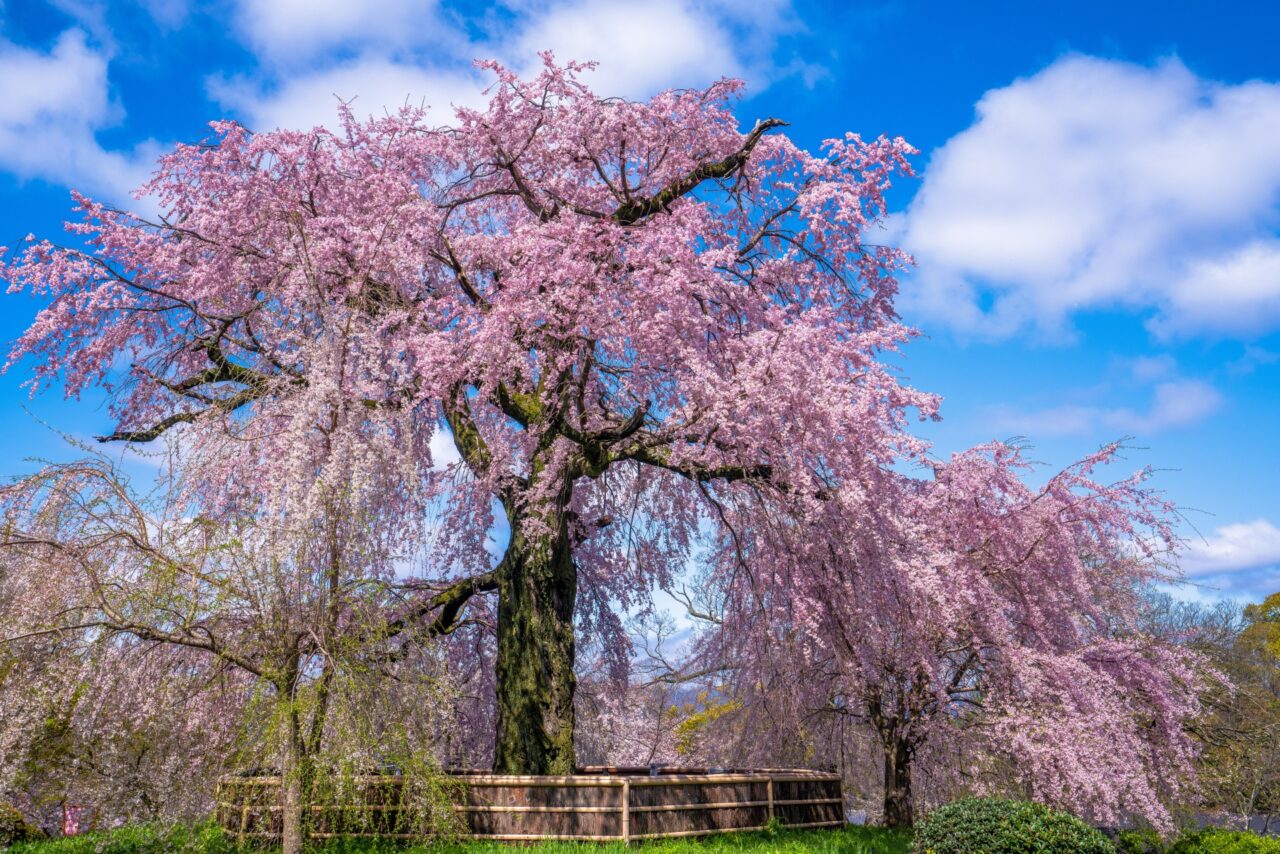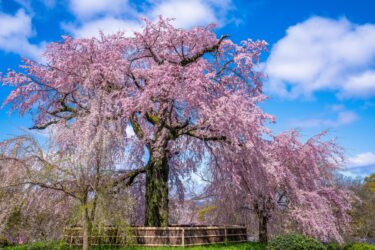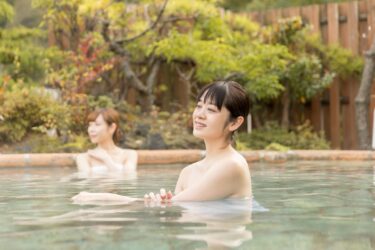If you’re exploring Kyoto’s Higashiyama district, Maruyama Park is one of the easiest green spaces to drop into during a day of sightseeing. Famous for its iconic weeping cherry tree, the park includes traditional Japanese garden scenery like a scenic pond and short walking paths. It’s located right next to Yasaka Shrine and close to major Kyoto sightseeing spots like Chion-in Temple, Kodai-ji Temple, and the atmospheric Ninenzaka/Sannenzaka area, so it’s a lovely place to take a stroll, no matter the season, when you’re traveling between Kyoto’s eastern temples.
What is Maruyama Park?
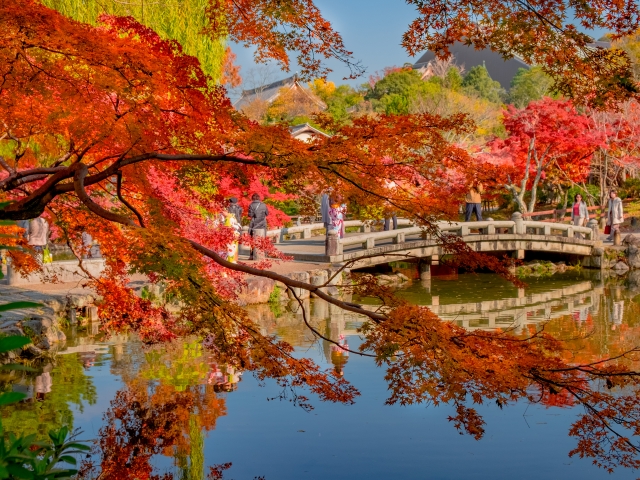
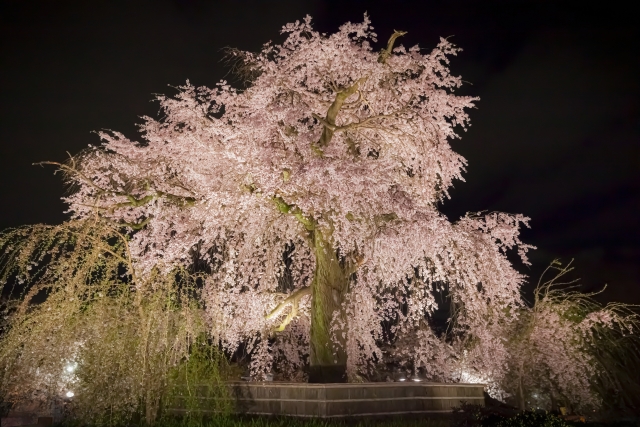
Opened in the late 1800s, Maruyama Park is a public park located between Kyoto’s Gion and Higashiyama districts. It features a pond with a low stone bridge, and several walking paths that lead through a landscape of Japanese maples, manicured hillsides, and even a tiny waterfall. It’s a good place to catch your breath between busy sightseeing spots, and unlike many famous temples, it’s completely free to enter.
The park is best known for its massive weeping cherry tree that becomes the center of Kyoto’s hanami (cherry blossom viewing) season every spring. When in bloom, the tree is illuminated at night, and the surrounding area becomes a lively gathering spot with food stalls and hanami picnickers. Outside of the cherry blossom season, which tends to draw big crowds, the park is a calmer place, but makes for a beautiful stroll in any season.
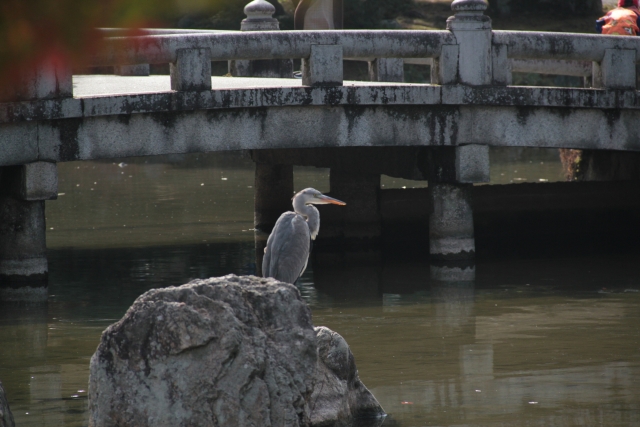
Highlights and What to See
The Weeping Cherry Tree
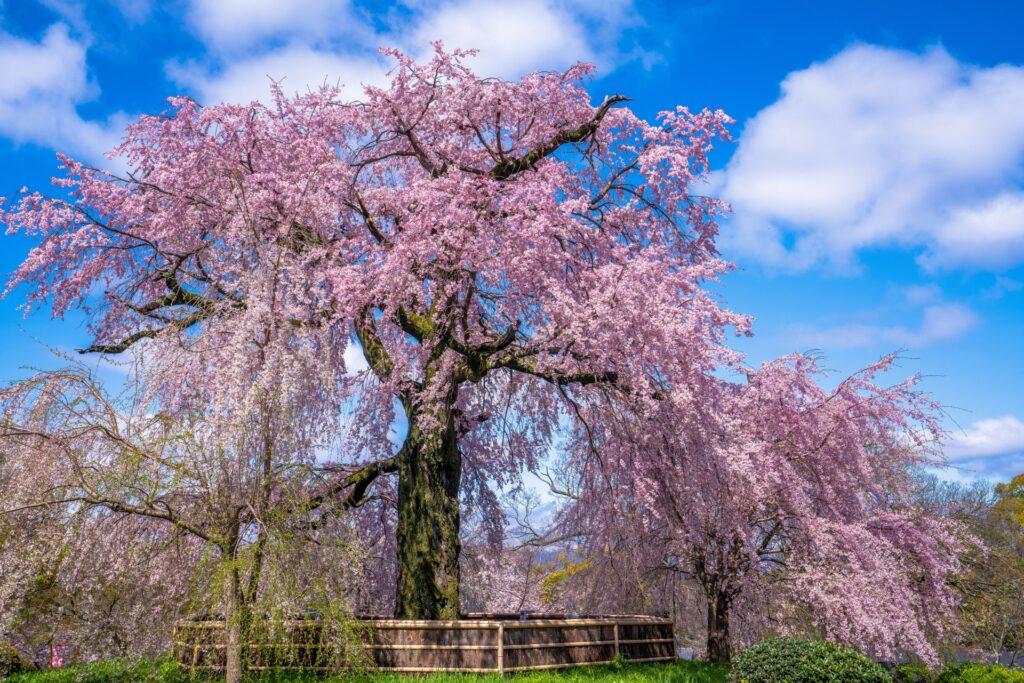
The park’s main attraction is the towering, nearly 90 year-old weeping cherry tree located near the central pond. If you visit in late March or early April, expect big crowds and a festive atmosphere, especially in the evenings when the tree is lit. Outside sakura season, the tree isn’t as dramatic a sight, but it’s still an interesting stop within the park.
Seasonal Events
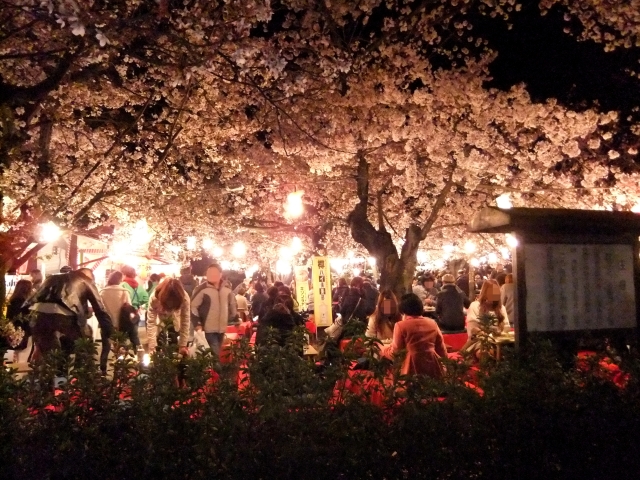

Maruyama Park is most famous for cherry blossom viewing, but it sees activity during other seasons as well. Food stalls usually appear during major Kyoto holidays, and the area around Yasaka Shrine tends to be busy during New Year’s and festival periods. The park is also beautifully illuminated during the annual Higashiyama Hanatouro Festival, which sees thousands of lanterns placed throughout the park and the neighboring Higashiyama district throughout the evening hours.
Walking Paths and Scenic Corners
Maruyama Park isn’t large, but it has enough small paths, a pond, and bridges to make a short stroll pleasant. If you prefer quiet corners, head toward the back of the park where the paths are less crowded. The area behind the ponds also connects to trails leading toward Chion-in Temple.

Nearby Sights

One advantage of visiting Maruyama Park is that it sits directly between several major attractions:
Yasaka Shrine: Right next to the park; no admission fee.
Chion-in Temple: A short uphill walk; known for its massive gate and spacious grounds.
Kodai-ji Temple: A few minutes away; famous for its elegant garden and bamboo grove.
Ninenzaka and Sannenzaka: Atmospheric pedestrian streets that lead toward Kiyomizu-dera Temple.
Because of this layout, the park works well as a “pause point” in the middle of your day.
How to Get to Maruyama Park

Maruyama Park sits on the eastern side of Kyoto, just behind Yasaka Shrine. You can enter through the shrine or from smaller gates along the park’s north and south sides.
By Train
There is no train station directly beside the park, but two stations are within a short walking distance:
Gion-Shijo Station (Keihan Line): About 10–12 minutes on foot
Kawaramachi Station (Hankyu Line): About 15 minutes on foot
If you’re already in central Kyoto, Keihan may be the most convenient option.
By Bus
Several Kyoto City Bus routes stop near Gion, which is the closest bus stop to Maruyama Park. The walk from the stop to the park is only a few minutes. During peak seasons, buses can be crowded and slow due to traffic, so allow extra time.
By Taxi
Taxis are easy to find throughout Kyoto and can drop you near the entrances to either Yasaka Shrine or other access points to the park.
On Foot
Higashiyama also happens to be one of Kyoto’s best walking districts. If you’re exploring Kiyomizu-dera Temple, Kodai-ji Temple, or the Gion area, Maruyama Park will fit naturally into your route. If you’re more ambitious, it’s also a 30-40 minute walk between Maruyama Park and the Philosopher’s Path to the north.
Things to Know Before You Visit

Visiting Maruyama Park is easiest early in the morning, when the paths are calm and the atmosphere is peaceful. Evenings during cherry blossom season can be festive but extremely crowded
Most of the main walkways in Maruyama Park are flat and easy to navigate, though some side paths can be slightly more narrow or uneven. As you explore the park, try not to block the paths for long photo sessions, keep picnics tidy and pack out any trash.

